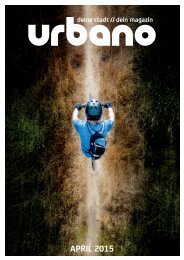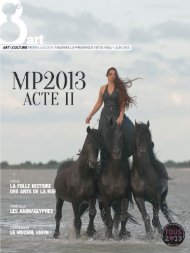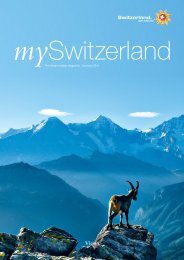Life Nature Magazine
themed ‘Dusk until Dawn’. These times are to me, some of the most exciting to experience wildlife. When I can make it out of bed in time for dawn, the chorus of birds chattering and singing above me makes the wrestle with my tiredness all worth it. As sun sets, some of the most secretive animals come out of their day time hiding places. Foxes and badgers can be seen by the lucky, and bats’ sonar can be heard with a handy bat detector. The time between dusk and dawn is fascinating too. Whilst most of us are tucked up in bed asleep, many animals are exploiting this quieter period, with multitudes of adaptations allowing them to use the darkness to their advantage. From this issue, many of the original team, including myself, are ‘phasing out’. We’re looking for new team members – see the careers section for more information on how to get involved. Whilst some of us will still be involved in the next issue, we’ll be taking less on, so we’d like to thank
themed ‘Dusk until Dawn’.
These times are to me, some of
the most exciting to experience
wildlife. When I can make it
out of bed in time for dawn,
the chorus of birds chattering
and singing above me makes
the wrestle with my tiredness
all worth it. As sun sets, some of
the most secretive animals come
out of their day time hiding
places. Foxes and badgers can
be seen by the lucky, and bats’
sonar can be heard with a handy
bat detector. The time between
dusk and dawn is fascinating
too. Whilst most of us are
tucked up in bed asleep, many
animals are exploiting this
quieter period, with multitudes
of adaptations allowing them
to use the darkness to their
advantage. From this issue,
many of the original team,
including myself, are ‘phasing
out’. We’re looking for new
team members – see the careers
section for more information
on how to get involved. Whilst
some of us will still be involved
in the next issue, we’ll be taking
less on, so we’d like to thank
Create successful ePaper yourself
Turn your PDF publications into a flip-book with our unique Google optimized e-Paper software.
IN THE FIELD FROM DUSK UNTIL DAWN AUTUMN ISSUE<br />
Images: Clare Greenwood, 2013. Illustration: Chris Beirne, 2013.<br />
16<br />
Old timers:<br />
<br />
Chris Beirne<br />
I’m suddenly startled by a rasping bark<br />
ringing out across the wooded valley,<br />
in the semi-darkness of this warm<br />
summers evening. The call sounds like it<br />
might belong to a large and vicious predator<br />
and if you believed the local tales, you<br />
would know that a ‘big cat’ stalks this area<br />
of forest. Thankfully, my common sense<br />
intervenes. I am not in a wild and isolated<br />
fragment of the Amazonian rainforest but<br />
sat on a fallen beech tree just three and a half<br />
kilometres from the M5 in Woodchester<br />
Park, Gloucestershire, and the vicious<br />
caller is in fact, a roe deer. I am trying to<br />
catch a glimpse of the notorious nocturnal<br />
mammal that is present here in abundance<br />
- the European badger. Badgers live<br />
in large underground networks<br />
of tunnels called setts; in<br />
this location and many<br />
others in the<br />
south of<br />
England, they live communally with other<br />
badgers in social groups. As the barking roe<br />
deer moves away all is quiet and my mind<br />
begins to wander again.<br />
I have been studying badgers for the last<br />
two years in order to understand the aging<br />
process. On the surface of it, that sounds<br />
pretty strange. Why would you study badgers<br />
in order to understand how things age?<br />
First and foremost, humans are far too long<br />
lived to collect data on during the timescale<br />
of a normal PhD (3 to 4 years), so I would<br />
be looking at less than 5% of an individual’s<br />
lifespan. Secondly, most of what we have<br />
learnt about ageing comes from laboratory<br />
strains of rats and mice. Such organisms are<br />
highly inbred to ensure that each individual<br />
is as genetically identical to each other as<br />
possible and they are reared in exactly the<br />
<br />
experiments are repeatable. However, it’s<br />
the variation in ageing rates that make it<br />
<br />
all, everyone gets old, but why do some<br />
people get old faster than others? Working<br />
on a wild population of mammals - such as<br />
badgers - embraces the variation that might<br />
be important in determining how long an<br />
individual lives and how fast it ages.<br />
Everyone gets old, but why do some people get old faster<br />
than others? Working on a wild population of mammals<br />
- such as badgers - embraces the variation that might be<br />
important in determining how long an individual lives<br />
As badgers have a highly tuned sense of<br />
smell I have positioned myself downwind<br />
from one of the larger setts within the aptly<br />
named ‘Beech social group’. After such a<br />
warm summer, the leaf litter is tinder dry,<br />
so if there are badgers on the move I should<br />
hear them well before I see them. Sure<br />
<br />
to hear the rustling of leaves further up the<br />
<br />
one badger up there, there’s a whole group<br />
of them! Despite the proximity of the noise,<br />
the darkness leaves me sightless.<br />
The Food and Environment Research<br />
Agency (FERA) have been trapping the<br />
badgers in and around Woodchester Park<br />
for over thirty seven years in order to<br />
understand how bovine tuberculosis (bTB),<br />
a disease particularly damaging to the<br />
cattle farming industry, spreads between<br />
groups of badgers under natural conditions.<br />
<br />
given a unique tattoo in order to identify<br />
each individual and on each subsequent<br />
occasion the badger is caught, it is tested<br />
for bTB. I also take a small blood sample<br />
from each badger in order to take back<br />
to the University’s Molecular Genetics<br />
Lab and measure each badgers telomere<br />
length. A telomere is a region of repeating<br />
‘TTAGGG’ nucleotide sequence at the end<br />
of each chromosome which protects the<br />
vital gene coding regions of DNA from<br />
degradation. In humans, and some species<br />
of birds, telomeres are at their longest at<br />
birth then steadily reduce in length as they<br />
are eroded by cell division and the ‘wear<br />
and tear’ of everyday life. Telomere length<br />
is positively associated with the number<br />
of times a cell can divide, the longer they<br />
are the more times a cell can divide in<br />
culture. As such telomere length has been<br />
suggested to act as a molecular clock<br />
which determines your biological age.<br />
However most of the telomere research<br />
conducted to date has been performed on<br />
animals grown in controlled conditions. I<br />
<br />
important determinants of longevity<br />
in wild populations under natural<br />
conditions.<br />
Just as I am starting to lose all<br />
hope of spotting a badger, I hear<br />
a rustle to my left. A solitary<br />
badger ambles out of the darkness<br />
and takes me by surprise. It stops<br />
<br />
way and that, searching for<br />
earthworms. It is impossible to<br />
tell in the half light but I hope it is<br />
badger “L54” or his brother “L56”<br />
who have been captured every<br />
year here since they were born in<br />
the year 2000. I know for a fact<br />
they both have cataracts, and most<br />
likely arthritis to boot. Before my<br />
<br />
makes them live so long. Is it super<br />
long telomeres, good genes, or<br />
have they simply ridden out their<br />
luck for the last thirteen years?<br />
Suddenly the wind shifts and the badger<br />
stops in its tracks. As soon as it catches a<br />
<br />
<br />
from whence it came.<br />
Chris Beirne uses his<br />
knowledge of molecular<br />
techniques to understand<br />
the proccesses which cause<br />
the individual differences<br />
in ageing rates, working<br />
with the Centre for Ecology<br />
and Conservation at Exeter<br />
Cornwall Campus.

















